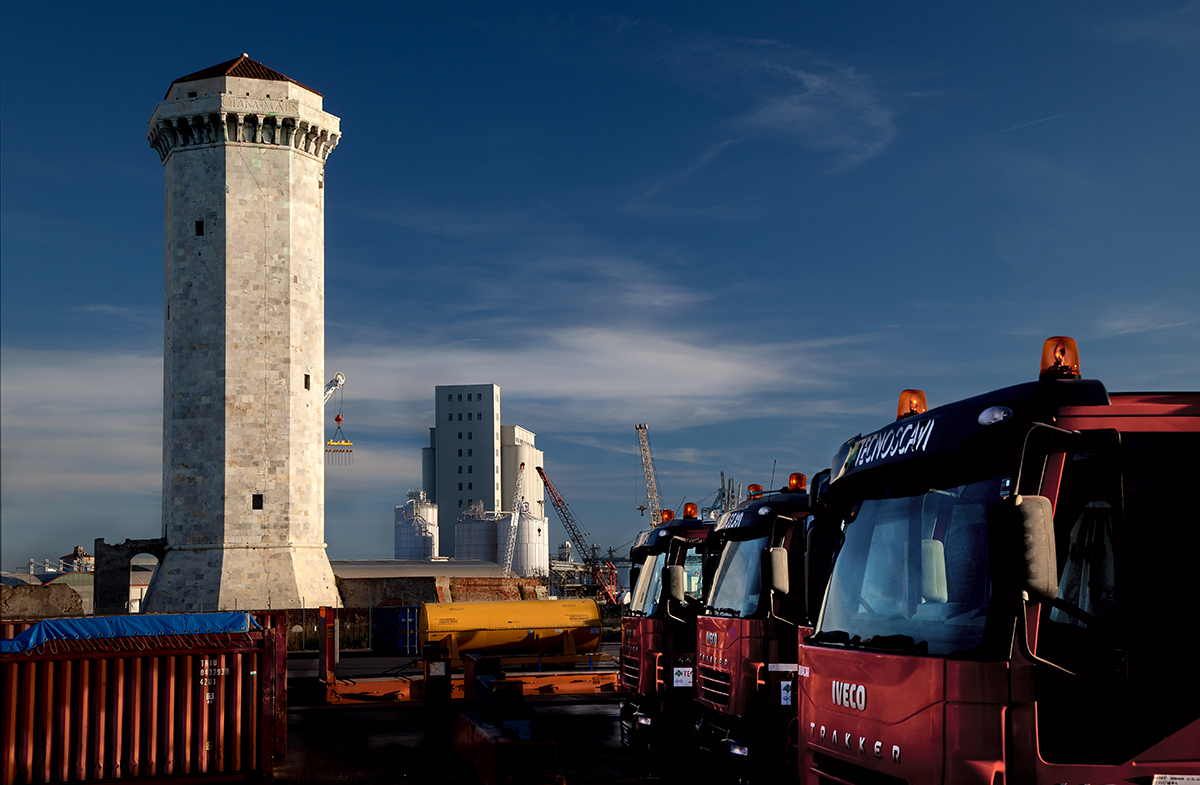Livorno and Piombino have not yet reached 2019 levels, but they are gradually getting back on course with growing volumes that indicate a real recovery in all commercial traffic sectors.
The latest report on statistical data for 2021 up to September, presented this morning by President Guerrieri during the press conference to present the Authority’s budget for 2022, certifies this.
Livorno
Between January and September, the port of Livorno handled 26.5 million tonnes of goods, 12.4% more than in the same period of the previous year. With the exception of cruise passengers, which recorded a 10.7% drop, the port has had pluses in front of all its traffic indicators.
Container throughput totaled 595,810 TEUs, up 9.6% from nearly 544,000 TEUs in January-September 2020. Exports were up 9.9% at 299,909 TEUs, while imports were up 9.2% at 295,901 TEUs. The quarterly analysis shows a steady upward trend from quarter to quarter.
Overall, full containers, imported (122,048, -3.4%) and exported (198,952, +19.7%), were up 9.7% over the previous year. Empty containers were also up by 28.1% to 113,779 TEUs. Excluding transshipment, a total of 434,779 TEUs (up 14%) were transported to/from the port’s hinterland, whilst transshipment activities were down (-0.8%). In fact, transshipment activities as a percentage of total port throughput fell from 30% last year to 27% this year.
Ro-ro traffic, one of Livorno port’s core businesses, is also doing well. In the first few months of 2021 383,211 units were handled, almost 43 thousand more than in January-September 2020 (+12.6%). The quarterly analysis shows how this traffic increased in all three quarters compared to 2020 and has already almost caught up with the pre-covid volumes of 2019.
There was also a clear increase in another of the port’s key traffic sectors, forest products, which was up by 6.6% to 1,364.349 million tonnes.
As for ferries, a total of 1.9 million passengers embarked and disembarked from Livorno’s quays, 32.6% more than in January-September 2020, when 1.432 million people passed through the port.
As we mentioned in the introduction, cruise traffic is the only sector to have recorded a downturn from January-September 2020. This must be attributed primarily to the overall passenger movements recorded by the port in January and February 2020, just before, therefore, the Pandemic broke out. On the other hand, 2021 shows traffic flows at 0% for almost the entire period of reference, with the exception of August and September, months in which a first real reversal of the trend was recorded. In the last two months alone, 16,492 people transited in the port and no less than 15 ships.
Meanwhile, there was a marginal 0.6% reduction in the number of vessels calling at the port compared to the previous year, 4819 compared to 4861. However, the average tonnage of individual vessels increased: 30 thousand tonnes (Gross Tonnage) compared to 26 thousand in January-September 2020.
Compared to 2019 figures, the total traffic handled in the reporting period is 5.7% lower in terms of tonnage. All other traffic indicators, with the exception of forest products, which increased by 10% compared to two years ago, still show a negative trend.
Piombino
The port of Piombino, like Livorno, recorded a strong increase in traffic. The figures, updated to August, show that a total of 2.8 million tonnes of goods were handled, 12.5% more than in the first eight months of the previous year.
In particular, there has been an upturn in the ro-ro traffic sector : 59,174 vehicles transited through the port , +18.2% compared to 50,063 vehicles in the same period of 2020.
We have witnessed a 27.4% increase in the number of passengers, 2.07 million, over the period , while there were 682,996 private vehicles passing through Piombino port , 35.5% more than in the same period the previous year.
The same goes for the number of vessel arrivals: 8,843 compared to 6,725 in 2020.
Compared to 2019 volumes, a total of 800,000 tonnes less cargo was handled (-22.3%). The ro-ro (-13.5%) and passenger traffic (-13.5%) was also down, while private vehicles recorded an increase of 0.8%.
Translation by Giles Foster

